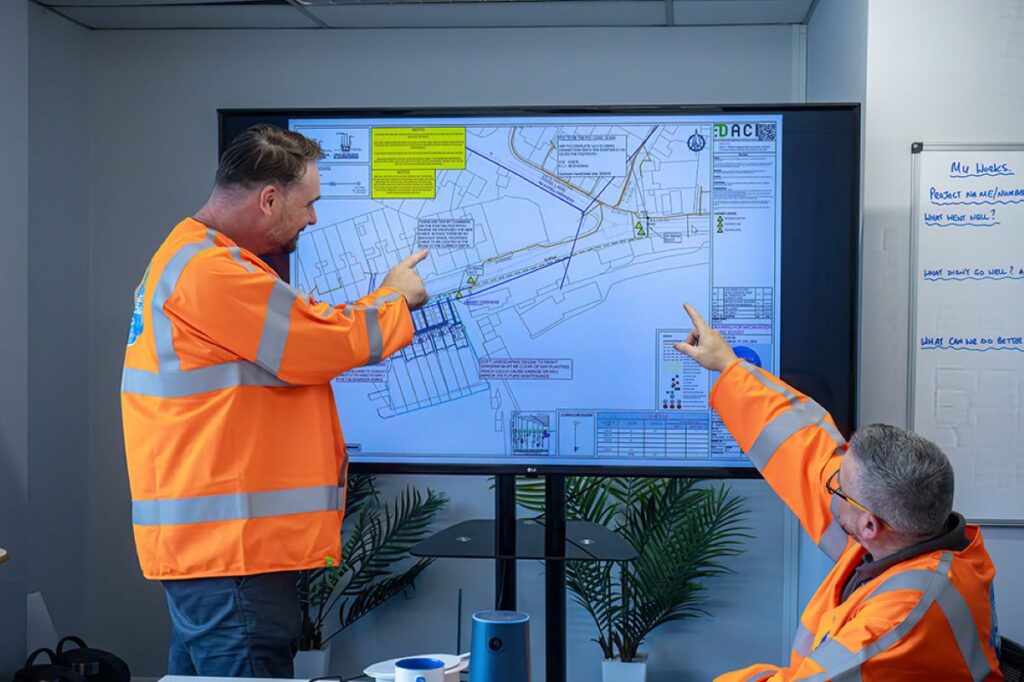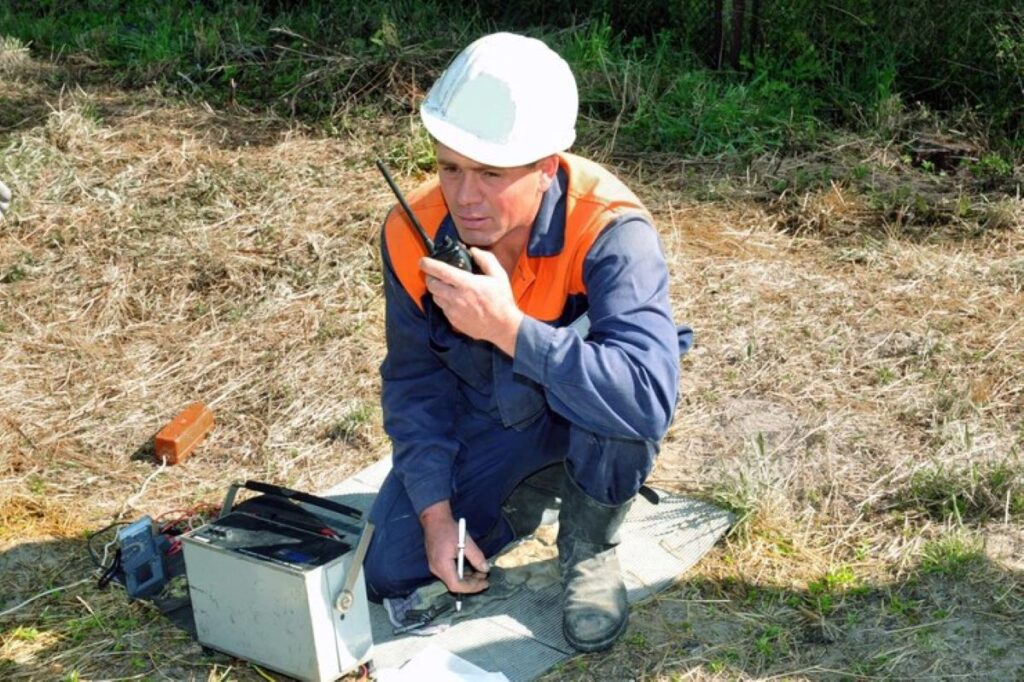Understanding the importance of subsurface utility locating
Subsurface utility locating is an essential practice in the construction industry that fundamentally involves identifying and mapping the underground utilities, such as cables, pipes, and conduits. In an age where urban construction is becoming increasingly complex, understanding the location of these utilities is imperative for the safety and efficiency of any project.
When utilities are not properly identified, the risks associated with digging or drilling become substantial. Damage to these infrastructures can lead to costly repairs, project delays, and potentially hazardous situations. This is why subsurface utility locating serves a critical role in ensuring that construction projects run smoothly and are executed safely.
The role of subsurface utility locating in construction
The construction sector is heavily reliant on accurate data regarding underground utility locating. Subsurface utility locating empowers project managers and site supervisors with the information they need to plan and execute work without unexpected interruptions. It’s a proactive measure that not only saves money but also insures against liabilities that can arise from unnoticed utility lines.
Construction teams equipped with accurate utility locational data can make informed decisions, ensuring that the right methods and tools are utilised for excavation. Without this data, project timelines can easily spiral out of control due to unexpected discoveries, and the penchant for ‘guesswork’ can lead to catastrophic incidents.
How subsurface utility locating contributes to project safety
Safety is paramount on any construction site. Subsurface utility locating plays a pivotal role in risk management by mitigating dangers associated with underground utilities. Use of comprehensive utility detection reduces the likelihood of accidents, which could otherwise harm workers and damage equipment.
Furthermore, adhering to regulatory compliance and safety standards is essential in construction. By accurately locating utilities, project teams can adhere to these regulations more effectively, thereby ensuring that their projects do not only meet industry standards but also protect the well-being of all personnel involved.
Delving into the technology behind subsurface utility locating
The tools and technologies utilized for subsurface utility locating have seen tremendous advancements over the years, with each innovation improving the efficiency and accuracy of the locating process. Understanding these technologies gives insight into how projects can be optimised for success.
The science of ground penetrating radar
One of the most groundbreaking advancements in subsurface utility locating has been the use of Ground Penetrating Radar (GPR). This technology employs radar pulses to image the subsurface. Its ability to detect various materials, including metals, plastics, and even soil anomalies, makes it a versatile tool in utility locating.
The implementation of GPR not only aids in mapping utilities accurately but also allows for the visualisation of utility layouts, making it easier to plan construction strategies. As an added bonus, GPR is a non-destructive method, meaning that it does not disturb the surface during the locating process, preserving existing paths and structures.
The evolution of electromagnetic locators
Alongside GPR, electromagnetic locators remain among the most commonly used devices in subsurface utility locating. These locators work by generating a signal that is transmitted through the utility line. When it reaches the surface, the locator, equipped with sensors, picks up the signal to provide the position of the utility.
As technology evolves, recent advancements have enabled electromagnetic locators to become more accurate and efficient. Modern models are capable of detecting utilities over larger distances and are equipped with advanced features that enhance the data collected, providing unprecedented accuracy in locating utilities even in densely packed environments.

The process of subsurface utility locating
While technology is at the forefront of subsurface utility locating, following a structured process is equally important. Proper project preparation, data collection, and analysis are essential elements that contribute to successful outcomes in utility locating.
Preparing for a subsurface utility locating project
Preparation is key when embarking on a subsurface utility locating project. This process begins with thorough planning, which includes reviewing existing utility maps, consulting with stakeholders, and understanding the project site. Site visits can provide invaluable information regarding landscape and layout, contributing to a more accurate locating process.
Gathering all necessary documentation and records is crucial in establishing a baseline. Engaging with local utilities for additional information can uncover utility lines not present on existing maps, thus enhancing accuracy further.
The step-by-step process of utility detection
Once preparation is complete, the utility detection phase can commence. Typically, this includes the following steps:
- Initial site survey and planning for methodology.
- Utilising GPR and electromagnetic locators to detect utility lines.
- Marking utilities on the surface using paint or flags.
- Documenting findings with precise recordings and reports.
This systematic approach not only allows for thorough detection but also permits adjustments to be made as new utilities are discovered throughout the project duration.

The benefits of using technology in subsurface utility locating
Utilising advanced technology in subsurface utility locating comes with substantial benefits, all of which contribute to better project outcomes. From risk management to overall project success, the positive implications are numerous.
Improving project efficiency with advanced technology
The adoption of newer utility locating technologies helps streamline workflows, allowing projects to progress at a faster pace. When teams have access to real-time data regarding the location of utilities, they can efficiently plan their operations, significantly reducing downtime and unexpected interruptions.
This efficiency ultimately leads to cost savings, as projects are completed within the established timelines and budgets. Efficient subsurface utility locating equips teams to tackle challenges head-on, promoting a more organised and productive work environment.
Reducing project risks through accurate utility locating
Accurate utility locating technology can substantially reduce various project risks prevalent in construction. By identifying utility lines before any excavation occurs, teams can mitigate damage and avoid hazards that could potentially lead to injury or costly repairs.
Incorporating accurate locating practices enables project leaders to make informed decisions and adjust plans proactively. This level of preparedness not only ensures worker safety but also positions projects for successful outcomes by aligning operational procedures with best practices.
Future trends in subsurface utility locating technology
As technology continues to advance, the future of subsurface utility locating promises exciting developments. Innovations are on the horizon that may transform the landscape of utility detection even further.
The impact of AI and machine learning on utility locating
The integration of Artificial Intelligence (AI) and machine learning in the subsurface utility locating realm is an area of great potential. These technologies can analyse vast amounts of data at unprecedented speeds, helping to create predictive models that can anticipate where utilities may be situated.
The implementation of AI algorithms can streamline processes, improve accuracy and enhance decision-making capabilities for project teams. As these innovations become mainstream, the future of utility locating looks brighter than ever. CheckOut more guidence about Subsurface Utility Solutions: Comprehensive Mapping for Urban Planning.
The potential of drone technology in subsurface utility locating
Furthermore, the advent of drone technology offers exciting possibilities for subsurface utility locating. Equipped with advanced sensors and imaging technologies, drones can survey larger areas in significantly less time than traditional methods. This capability can provide a comprehensive overview of a site, helping to identify potential utility locations with high accuracy.
As drones become more accessible and their technologies evolve, they are poised to play a transformative role in the construction sector, making subsurface utility locating more efficient than ever before.
